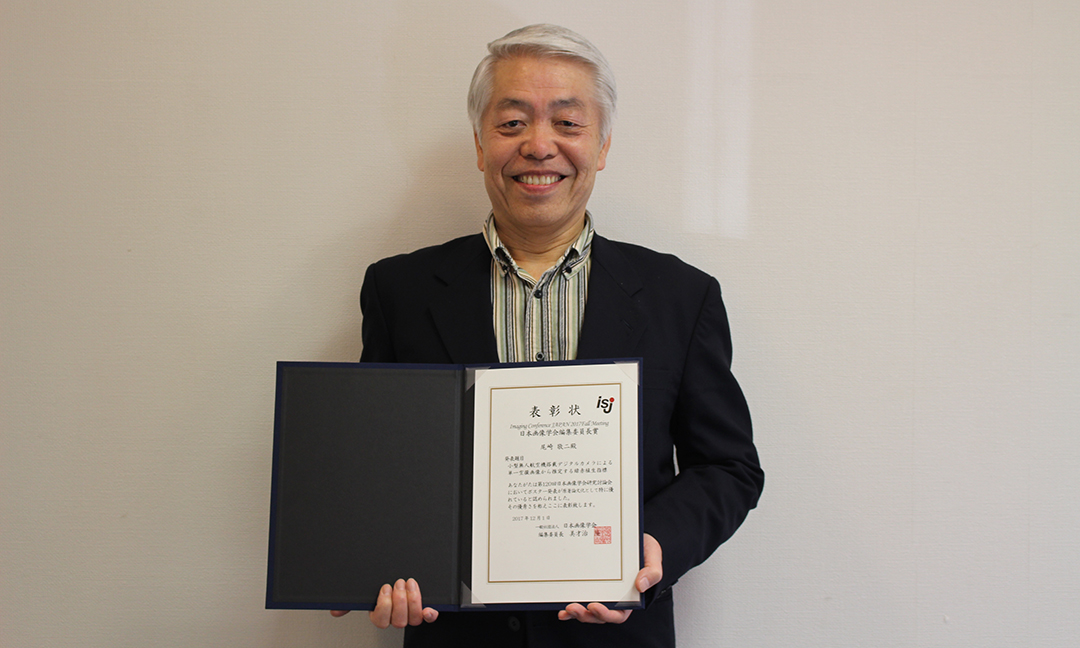NEWS
ICU Visiting Professor Keiji Osaki Wins Imaging Society of Japan Editor-in-Chief Award
Update: December 19, 2017

At the 'Imaging Society of Japan's Imaging Conference Japan 2017 Fall Meeting', which was held from November 30 (Thur.) to December 2 (Sat.), a poster presentation by ICU Visiting Professor Keiji Osaki (Major: Information Science) was awarded the Imaging Society of Japan Editor-in-Chief Award.
Professor Osaki is engaged in research in which digital camera images are used to estimate vegetation index, and for his research related to "Improvement of Accuracy in Estimated Vegetation Index by Restriction of Luminance Range in Images Captured by Digital Cameras ," he was awarded the Best Paper Award at 'the 77th National Convention of the Information Processing Society of Japan ' in March 2015.
Professor Osaki's research theme
"Estimated Green Red Vegetation Index from a Single Image Captured by a Digital Camera on a Small Unmanned Aerial Vehicle "
Outline of research
Up until now, two types of images acquired by digital cameras have been necessary for estimation of vegetation index: one is near-infrared image and the other is visible light image. But a method has been sought to make it possible to use only one type, a visible light image, to distinguish between vegetation and non-vegetation on the ground. The application of green red vegetation index to vegetation areas was not able to resolve the problem of shadow areas being misclassified as vegetation areas.
By the application of 'excess green index' that targets green foliage, which has been proposed around 2006, the problem of shadow areas misclassification was resolved. . This method made it simple and easy to distinguish vegetation areas by using just images from a camera mounted on a small unmanned aerial vehicle (a drone) or from various ordinary visible light cameras. As a result, it has become easier to draw up a vegetation index distribution map , which is one type of global environment information, and it is expected that we will make the most of ordinary digital camera images as a sensor.
Comment by Professor Osaki

I am very honored to receive an award like this, and I would like to express my heartfelt gratitude to the many people who supported my efforts.

